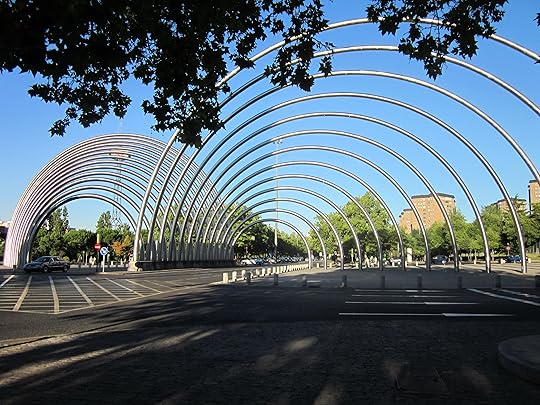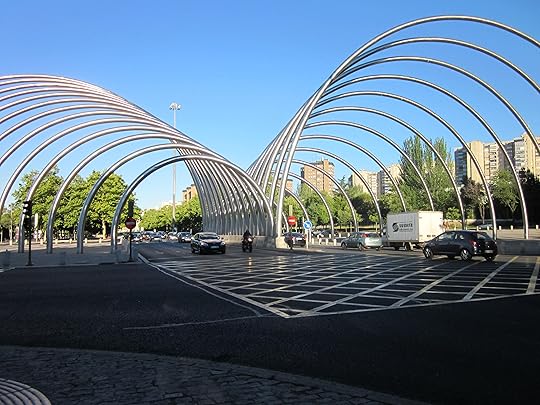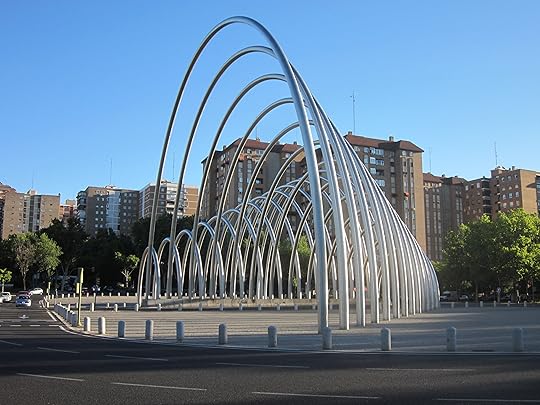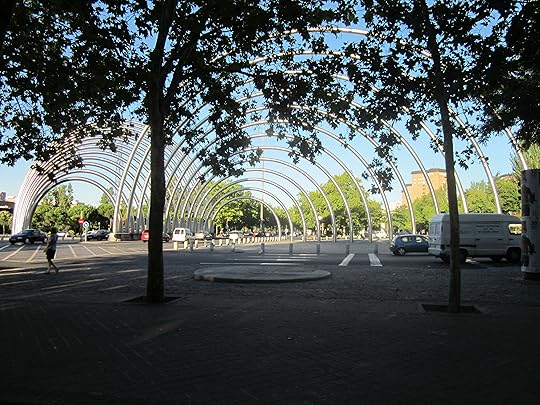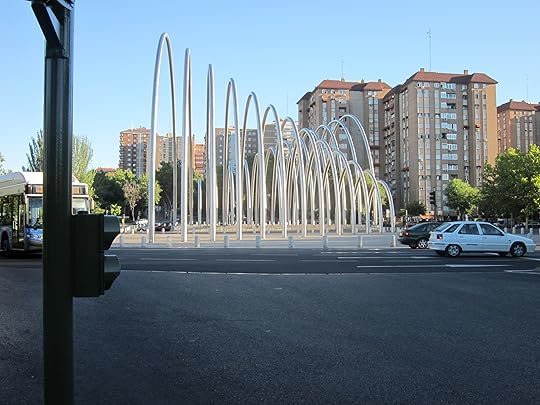The Gate of Enlightenment
When Madrid’s Gate of Enlightenment (Puerta de la Ilustración) was inaugurated in 1990 it was intended to be a new gate for the twenty first century, having the same symbolic importance as the city’s other celebrated gates — La Puerta de Alcalá, La Puerta de Toledo etcetera — which have, over the centuries, gained iconic, let’s-make-these-into-a-fridge-magnet status. There’s no risk of any enterprising knickknack manufacturer turning the Gate of Enlightenment into a fridge magnet: Madrileños are not particularly fond of it and, as a consequence, tourists are unaware of it.
The Gate of Enlightenment got off on the wrong foot. Its construction was tabled as part of the project for the completion of Madrid’s first ring-road, the M30, whereby the extant western and eastern sections would be joined, squaring the circle, as it were. The northern section of the M30 wouldn’t be any run-of-the-mill motorway, however. It wouldn’t be like the grim, utilitarian western and eastern stretches built in the 1970s. No; there was talk of the new northern section having leafy boulevards, parks, fountains, pedestrian crossings and sculptures — lots of them. At least four on the scale of the Gate of Enlightenment, which was to be Spain’s largest ever sculpture.
As construction on the M30 dragged on and on and the disruption to the lives of north Madrid’s inhabitants continued, the citizenry became less and less enthused by the grand plans for the road. They just wanted an end to the noise and the dust and the earth movers and diggers and detours and delays. They just wanted their road. Eventually, plans for three of the four sculptures were shelved, with only the Gate of Enlightenment surviving the cull. As its gleaming arcs grew slowly up from the ground, it became a symbol for the people’s discontent with the entire M30 project, their totem for complaints and recriminations. The gate was pointless, expensive, impractical, they said, a further source of road closures and detours. When one of the huge concrete beams on which the sculpture is supported fell through the earth and pierced the tunnel of line 9 of Madrid’s metro (thankfully not while a train was going through, but still managing to shut that section of line down for weeks), it was the final nail in the coffin of the Gate. From then on, it was viewed with hostility and dislike. It was finally inaugurated in 1990 with minimal fanfare. No television cameras. No radio. Minimal press reportage.
The Gate has never recovered from its prenatal unpopularity, which is a pity, because it is a bold and brave statement. Its two lines of interlocking arches (13 in each row) shine in the Spanish sun like the spires of Camelot. Sculptor, the Valencian, Andreu Alfaro, spoke ambitiously of a gateway that would welcome motorists to a the city with a dazzling display of baroque modernism. The arches are undoubtedly modern. Technology was pushed to the limit to realize Alfaro’s design. The sections of stainless steel were manufactured in Spain by a civil engineering company, sent to Italy to be polished and bent into shape, welded together on site and filled with concrete as they went up. After more than twenty years of exposure to the elements and the pollution from the thousands of cars passing beneath each day, there isn’t a scintilla of rust or tarnishing in evidence. And there certainly is something baroque about the curious and pleasing manner a descending line of semi-circles interweaves into a reciprocatingly ascending line and the effect this produces when the sculpture is viewed from various angles. The biggest arch is an impressive 23 meters high and 41 wide and each line is 33 meters long.
Ask your average Madrileño on the street today and you will find no spark of fondness for Alfaro’s arches. On top of the sculpture’s unfortunate beginnings, the fact that the Gate of the Enlightenment is located on a roundabout on the M30 — one of Europe’s busiest ring-roads and on which thousands of motorists stew on a daily basis in rush hour traffic — does not help. As for the Gate’s becoming a tourist landmark; it is too far out from the city center to feature on the guides. If a single tourist has ever taken a detour from the typical Paseo del Prado/Gran Vía/Sol/Royal Palace route to view the arches, I would be astonished. So a sculpture intended to stand shoulder-to-shoulder with the Puerta de Alcalá is today a criminally anonymous and ignored structure that stands on a roundabout on the M30 and under which pass a citizenry at best ambivalent and indifferent its presence.



